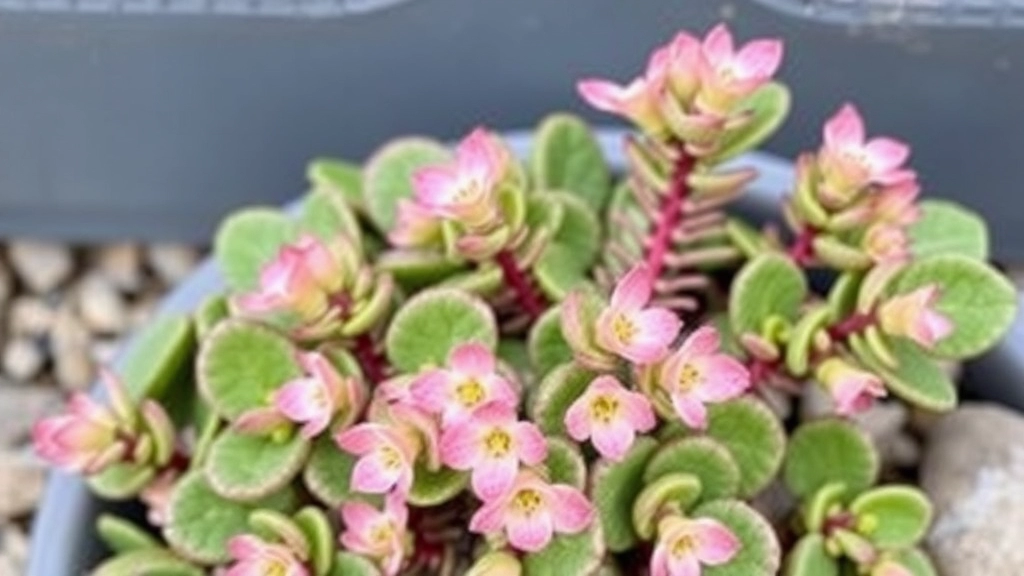Devil’s Backbone Plant Kalanchoe
Have you ever come across the intriguing Devil’s Backbone Plant Kalanchoe? Known scientifically as Kalanchoe daigremontiana, this succulent is a favourite among plant enthusiasts for its unique look and easy-care nature. Often referred to as the “Mother of Thousands,” it produces small plantlets along its leaf edges, making propagation a breeze. Native to Madagascar, it thrives in bright light, well-drained soil, and dry conditions, making it a perfect choice for both indoor and outdoor gardens.
Caring for the Devil’s Backbone Plant Kalanchoe
If you’re curious about how to care for the Devil’s Backbone Plant Kalanchoe, you’re in the right place. From identifying its distinct features to understanding its light and soil preferences, this guide covers everything you need to know. Learn about its watering needs to avoid root rot, discover propagation tips, and find out how to keep your pets safe from its potential toxicity. Whether you’re dealing with pests or troubleshooting common growth issues, we’ve got you covered.
Are you struggling to identify the Devil’s Backbone Kalanchoe in your collection or at your local nursery?
This unique succulent, scientifically known as *Kalanchoe gastonis-bonnieri*, is easily recognizable once you know what to look for.
## Key Identifying Features
– **Distinctive Leaves**: The most striking feature is its elongated, zigzag-shaped leaves that grow in a unique, almost spine-like formation, giving it the name “Devil’s Backbone.”
– **Leaf Colour**: The leaves are typically a rich green, often with a glossy finish. In some varieties, you may notice a hint of reddish edges, especially when exposed to bright light.
– **Growth Habit**: This plant tends to grow upright, reaching heights of up to 1 metre (3 feet) when fully mature.
– **Flowers**: When in bloom, the Devil’s Backbone produces clusters of tubular flowers, usually in shades of red, orange, or yellow. These flowers can attract pollinators, adding an extra layer of beauty to your garden.
– **Offsets**: One of the most exciting features of the Devil’s Backbone is its ability to produce offsets or plantlets along the leaf edges. These can be easily propagated, making it a popular choice for succulent enthusiasts.
Identifying the Devil’s Backbone Kalanchoe is straightforward once you familiarize yourself with these characteristics. For more detailed care tips, you might find our [ultimate guide to growing and caring for succulent plant Kalanchoe](https://planthq.org/ultimate-guide-to-growing-and-caring-for-succulent-plant-kalanchoe/) helpful. Additionally, if you’re interested in exploring other varieties, check out our [top Kalanchoe succulent varieties and care tips](https://planthq.org/top-kalanchoe-succulent-varieties-and-care-tips/).
Best Light and Soil Conditions for Optimal Growth
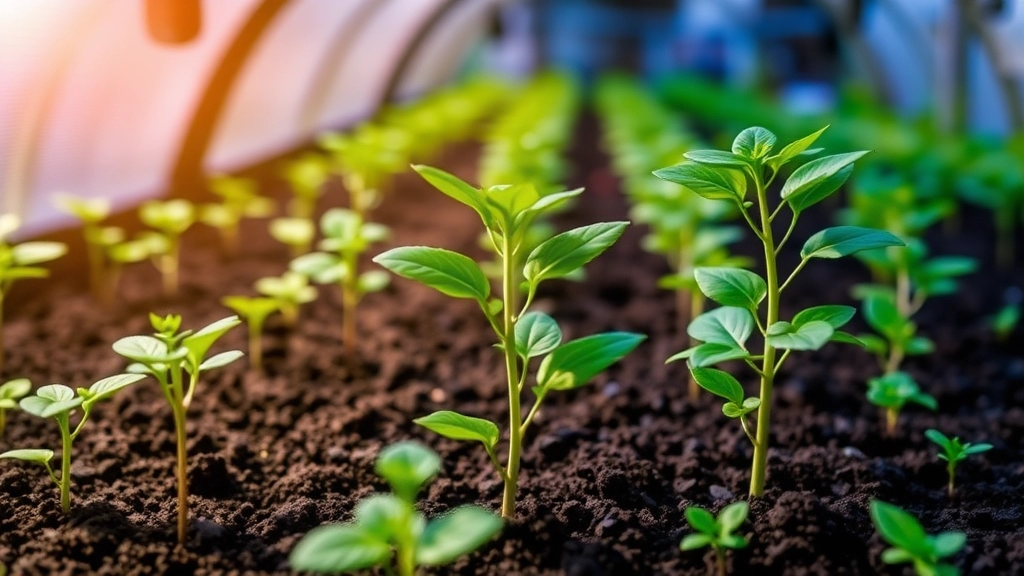
So, you’ve got your Devil’s Backbone Kalanchoe, and now you’re probably wondering, “What’s the best way to keep this beauty thriving?”
First off, let’s talk light. This plant absolutely loves bright, indirect sunlight.
- Ideal Spot: Place it near a window where it can soak up that light without getting scorched.
- Direct Sunlight: While it can tolerate some direct sun, too much can cause leaf burn.
- Low Light: If it’s not getting enough light, it’ll start stretching out, becoming leggy and less vibrant.
Now, onto soil. The right soil is crucial for your Kalanchoe’s health.
Choose a well-draining mix:
- Cactus or Succulent Mix: This is a great option because it allows excess water to flow away easily.
- DIY Mix: You can create your own by mixing regular potting soil with sand or perlite. This helps with drainage and keeps the roots happy.
Watering Requirements: Avoiding Root Rot
One of the most common concerns for anyone caring for the Devil’s Backbone Kalanchoe is ensuring the plant receives the right amount of water. Overwatering can lead to root rot, a condition that can be detrimental to your plant’s health.
Understanding Watering Needs
The Kalanchoe thrives in well-draining soil and prefers to dry out between waterings. Here are some key points to consider:
- Frequency: Water every 2-3 weeks during the growing season (spring and summer). In the winter, reduce this to once a month.
- Check Soil Moisture: Before watering, stick your finger about an inch into the soil. If it feels dry, it’s time to water. If it’s still moist, wait a few more days.
- Watering Technique: Water thoroughly until it drains out of the bottom. This ensures the roots get enough moisture without sitting in water.
Signs of Overwatering
Keep an eye out for these signs that may indicate your Kalanchoe is receiving too much water:
- Yellowing leaves
- Wilting or mushy stems
- Foul odour from the soil
If you notice these symptoms, reduce your watering frequency immediately and check the drainage of your pot.
Preventing Root Rot
To avoid root rot, consider these practical tips:
- Choose the Right Pot: Ensure your pot has drainage holes to allow excess water to escape.
- Use Well-Draining Soil: A cactus or succulent mix is ideal, as it allows for proper airflow and drainage.
- Avoid Standing Water: Never let your plant sit in water. Empty the saucer if you notice any pooling.
For more detailed information on watering practices, check out our Kalanchoe Tomentosa watering best practices guide. Additionally, if you’re interested in learning about the overall care of Kalanchoe plants, our ultimate guide on Kalanchoe care might be helpful.
Propagating Kalanchoe Through Plantlets
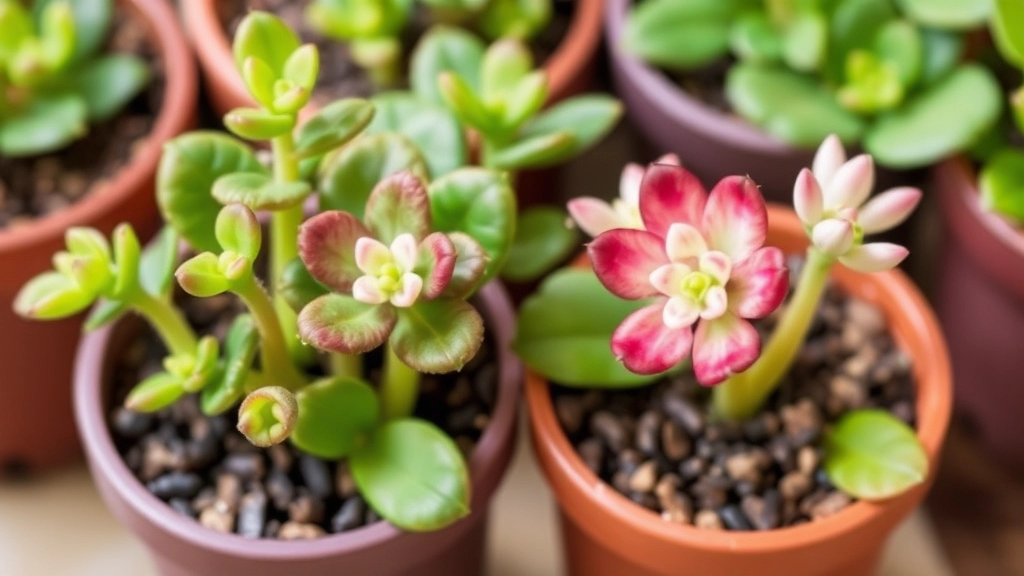
Have you ever wondered how to multiply your Devil’s Backbone Kalanchoe effortlessly? Propagating this unique succulent is a rewarding experience that can expand your plant collection or provide gifts for friends.
Understanding Plantlets
Kalanchoe plants produce small offsets, or plantlets, that can easily be separated and rooted. This natural propagation method is both simple and effective.
Steps for Successful Propagation
- Select Healthy Offsets: Look for plantlets that are at least a few inches tall and have healthy leaves.
- Gently Remove: Using clean scissors or your fingers, carefully detach the plantlet from the main plant.
- Allow to Callous: Place the removed plantlet in a dry area for a day or two. This helps the cut end callous over, reducing the risk of rot.
- Prepare the Soil: Use a well-draining soil mix, such as a cactus or succulent blend. This is crucial for healthy root development.
- Plant the Offset: Make a small hole in the soil and gently place the plantlet in it. Cover the base lightly with soil.
- Water Sparingly: After planting, give it a light watering. Avoid soaking; overwatering can lead to root rot.
Ideal Conditions for Rooting
- Light: Place the pot in a bright, indirect light location. Direct sunlight can scorch the delicate plantlets.
- Temperature: Aim for a warm environment, ideally between 20-25°C (68-77°F), to encourage growth.
Toxicity and Safety Considerations for Pets
As we delve deeper into caring for the Devil’s Backbone Kalanchoe, it’s essential to consider its safetyâespecially for our furry companions. Many plant enthusiasts often wonder if this beautiful succulent poses any risks to pets.
Understanding Toxicity
The Devil’s Backbone Kalanchoe (Kalanchoe daigremontiana) is known to be toxic to pets, particularly cats and dogs.
Key Points on Toxicity:
- Symptoms of Ingestion:
- Vomiting
- Diarrhoea
- Lethargy
- Abdominal pain
- What to Do If Ingested:
- Contact your veterinarian immediately.
- Provide them with details about the plant and the amount ingested.
By keeping this plant out of reach, you can help ensure your pets remain safe while you enjoy the beauty of your Kalanchoe.
Safety Tips for Pet Owners
If you’re a pet owner, consider these practical steps to mitigate risk:
- Placement: Keep the Devil’s Backbone on high shelves or in rooms where pets aren’t allowed.
- Alternatives: Explore pet-safe plants if you want greenery without the worry.
- Education: Educate family members about the plant’s toxicity, especially children who may not understand the risks.
Understanding the potential dangers of the Devil’s Backbone Kalanchoe is crucial for pet owners. For more information on caring for different Kalanchoe varieties, you can check out this ultimate care guide.
Common Pests and How to Control Them
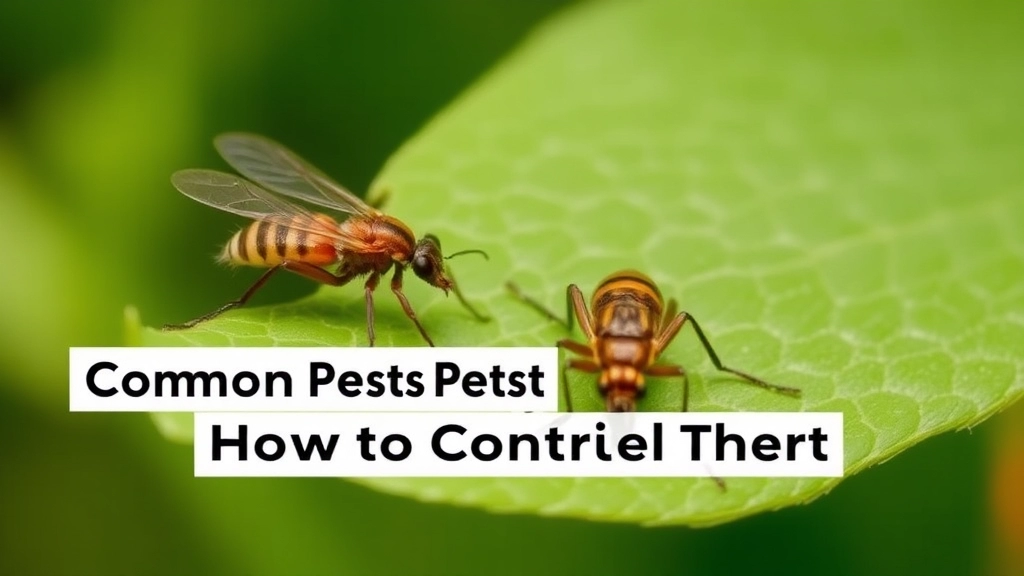
So, you’ve got your Devil’s Backbone Kalanchoe thriving, but suddenly, you notice some uninvited guests. Pests can be a real pain, right? Let’s dive into the common culprits and how to keep them at bay.
Common Pests:
- Mealybugs
These fluffy little guys love to hide in the leaf joints.
They suck the sap and can lead to yellowing leaves. - Spider Mites
Tiny and hard to spot, these pests leave fine webbing on your plant.
They thrive in dry conditions, so keep an eye out, especially in winter. - Aphids
These small, green insects can cluster on new growth.
They can distort leaves and stunt growth.
Control Methods:
- Regular Inspections
Check your plant weekly. Catching pests early makes a huge difference. - Soap Solution
Mix a few drops of dish soap with water and spray it on affected areas. It suffocates the bugs without harming your plant. - Neem Oil
A natural pesticide that can deter a variety of pests. Just mix it with water and spray it on your Kalanchoe. - Isolate Infested Plants
If you spot pests, move the affected plant away from your others to prevent spreading. - Encourage Beneficial Insects
Ladybugs and lacewings can help keep pest populations in check.
Keeping your Devil’s Backbone Kalanchoe pest-free doesn’t have to be a chore. Just stay vigilant and take action when needed.
Seasonal Care Tips: Adjusting Water and Light
As the seasons change, so do the needs of your Devil’s Backbone Kalanchoe.
You may wonder how to keep your plant thriving through varying weather conditions.
Light Adjustments:
- Spring and Summer:
- Aim for bright, indirect sunlight.
- A south or west-facing window is ideal.
- Too much direct sunlight can scorch the leaves.
- Autumn and Winter:
- Reduce light exposure slightly.
- A bright spot with filtered light works well.
- Consider rotating your plant to ensure even growth.
Watering Needs:
- Spring and Summer:
- Water when the top inch of soil feels dry.
- Use the soak-and-dry method to prevent overwatering.
- Autumn and Winter:
- Cut back on watering frequency.
- Allow the soil to dry out completely between waterings.
- This helps prevent root rot during the dormant period.
Temperature Considerations:
- Keep your Kalanchoe in a warm spot, ideally between 18°C and 24°C.
- Protect it from cold drafts, especially in winter.
By adjusting light and water according to the seasons, you ensure your Devil’s Backbone Kalanchoe remains healthy and vibrant. For more specific tips, you might want to check out the expert tips for healthy growth and the optimal care for Kalanchoe Blossfeldiana growth.
Troubleshooting Common Growth Issues (Leggy Growth, Leaf Drop)
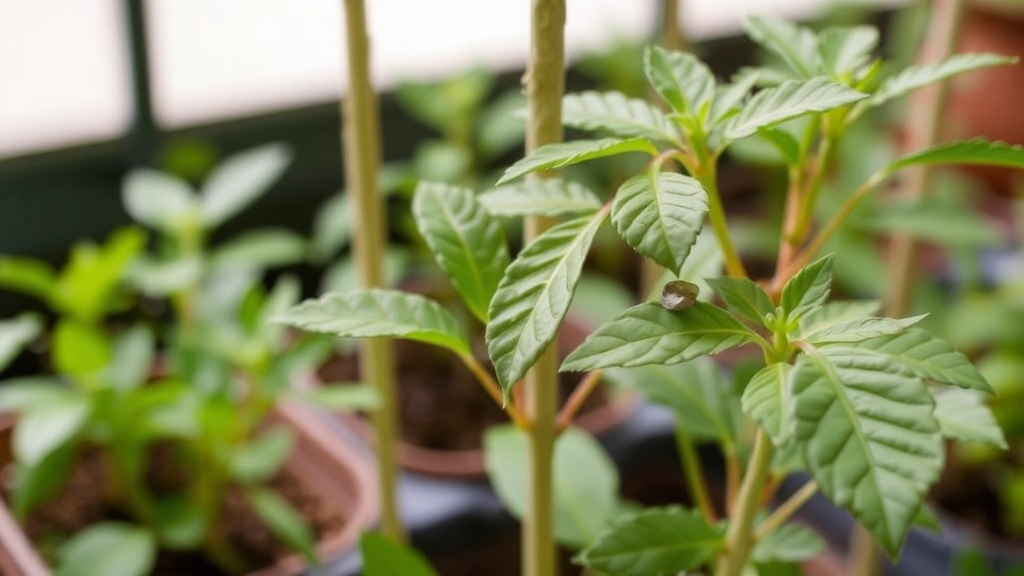
So, you’ve got your Devil’s Backbone Kalanchoe, and it’s not looking quite right?
Maybe it’s stretching out, looking leggy, or dropping leaves like it’s shedding a winter coat.
No worries, let’s dive into these common growth issues together.
Leggy Growth
Leggy growth is when your Kalanchoe looks like it’s reaching for the sky but ends up looking spindly and weak.
Here’s what might be happening:
- Insufficient Light: If your plant isn’t getting enough bright, indirect sunlight, it’ll start stretching towards the light source.
- Overcrowding: If it’s too close to other plants, it might not get the light it needs.
How to Fix It:
- Move It: Place your Kalanchoe in a sunnier spot.
- Rotate Regularly: Give it a little spin every now and then to ensure even light exposure.
- Prune: Don’t be shy—trim those leggy stems back to encourage bushier growth.
Leaf Drop
Now, let’s chat about leaf drop.
Seeing your Kalanchoe dropping leaves can feel like a mini heart attack, right?
Here’s what might be causing it:
- Overwatering: Too much water can lead to root rot, which makes your plant sad and droopy.
- Sudden Temperature Changes: If it’s too cold or too hot, your plant might react by shedding leaves.
How to Fix It:
- Check Your Watering: Make sure the soil is dry before you water again.
- Maintain Consistent Temperatures: Keep it in a stable environment, away from drafts or heat sources.
Preventing the Spread: Managing Invasiveness in Outdoor Gardens
As we delve into the care of the Devil’s Backbone Kalanchoe, it’s crucial to consider its potential to become invasive in outdoor gardens.
Many gardeners worry about how quickly this plant can spread if left unchecked.
To effectively manage its invasiveness, consider the following strategies:
- Containment: Use pots or raised beds to restrict root growth. This prevents the plant from spreading uncontrollably.
- Regular Pruning: Trim back any overgrowth regularly. This not only keeps the plant in check but also encourages bushier growth. For more detailed pruning tips, check out our step-by-step guide on propagating Kalanchoe Tomentosa.
- Monitor Seed Production: If your Kalanchoe flowers, be vigilant about seed dispersal. Remove spent flowers before they set seed. Learn more about growing Kalanchoe Blossfeldiana from seeds to better understand seed management.
- Mulching: Apply a layer of mulch around the plant. This can inhibit seed germination and reduce competition from other plants.
- Educate Yourself: Familiarise yourself with local regulations regarding invasive species. This knowledge can help you make informed decisions about your garden.
By implementing these strategies, you can enjoy the beauty of the Devil’s Backbone Kalanchoe without the fear of it overtaking your outdoor space.
FAQs about Devil’s Backbone Plant Kalanchoe
What are the best light conditions for Devil’s Backbone Kalanchoe?
The Devil’s Backbone Kalanchoe thrives in bright, indirect sunlight. While it can tolerate some direct sun, too much can cause leaf burn. Insufficient light can lead to leggy growth.
What type of soil is ideal for Devil’s Backbone Kalanchoe?
A well-draining soil mix is crucial. Opt for a cactus or succulent mix, or create your own by mixing regular potting soil with sand or perlite.
How can I propagate my Devil’s Backbone Kalanchoe?
Propagation is simple and effective through offsets or plantlets. Select healthy offsets, detach them carefully, let them callous, and plant them in well-draining soil. Water sparingly to avoid root rot.
What should I do if my Devil’s Backbone Kalanchoe is becoming leggy?
Leggy growth often indicates insufficient light. Move your plant to a sunnier spot, rotate it regularly for even light exposure, and prune leggy stems to encourage bushier growth.
Why is my Devil’s Backbone Kalanchoe dropping leaves?
Leaf drop can be caused by overwatering or sudden temperature changes. Ensure the soil is dry before watering again and maintain consistent temperatures, avoiding drafts or heat sources.
What are common pests that affect Devil’s Backbone Kalanchoe?
Common pests include mealybugs, spider mites, and aphids. Regular inspections, using a soap solution or neem oil, isolating infested plants, and encouraging beneficial insects can help control these pests.
How can I prevent pests on my Devil’s Backbone Kalanchoe?
Regularly inspect your plant, use a soap solution or neem oil to treat affected areas, and isolate any infested plants to prevent the spread of pests. Encouraging beneficial insects like ladybugs can also help keep pest populations in check.
What are the ideal conditions for rooting Kalanchoe plantlets?
Place the pot in a bright, indirect light location and maintain a warm environment, ideally between 20-25°C (68-77°F), to encourage growth.
References
-
How to Grow Devil’s Backbone Plant
-
Devil’s Backbone Care: Learn About Growing Devil’s Backbone Plants
-
Kalanchoe: How to Grow and Care for Kalanchoe Plants
